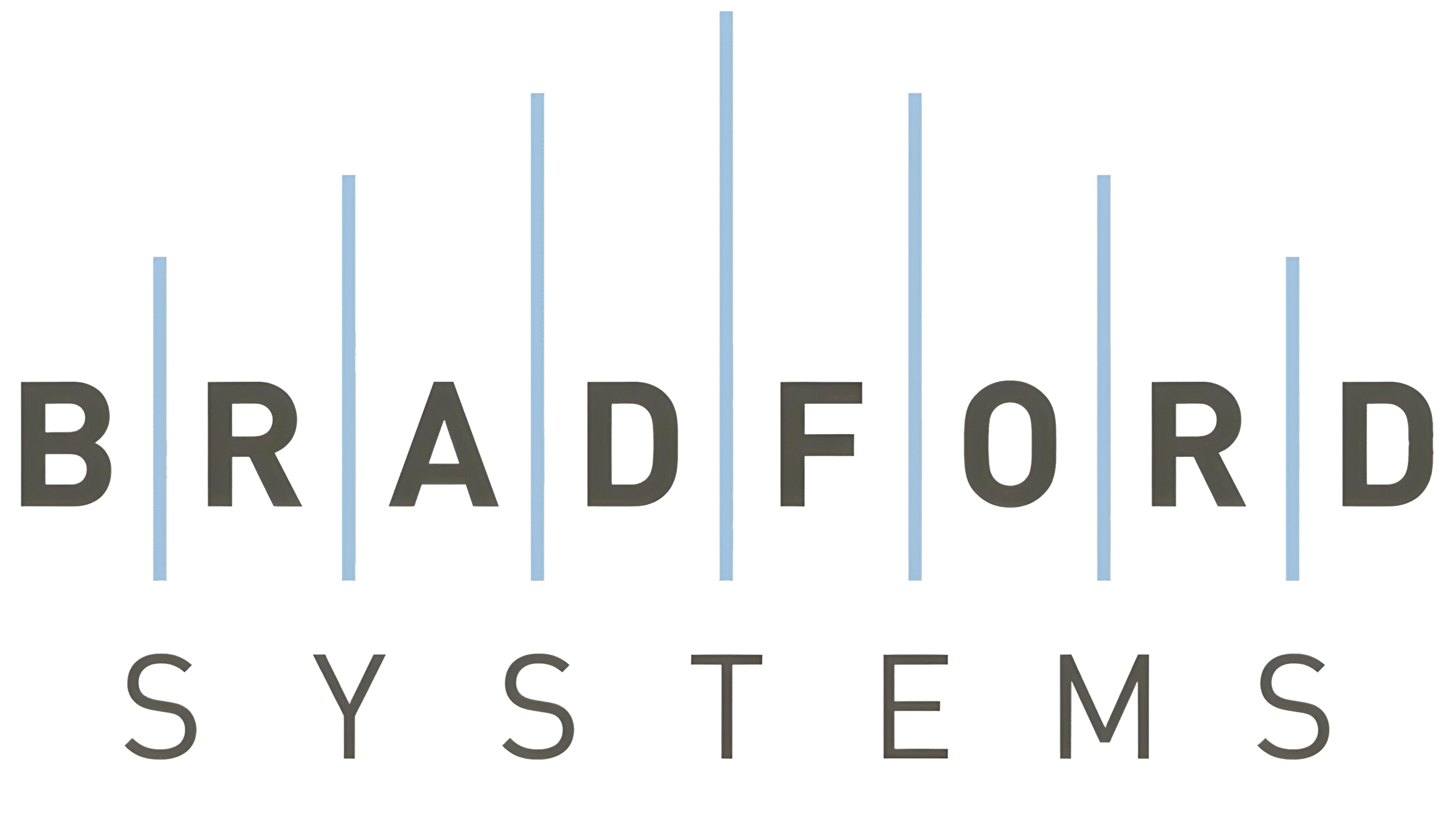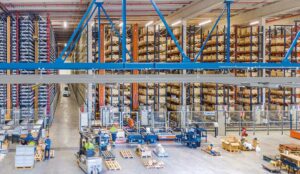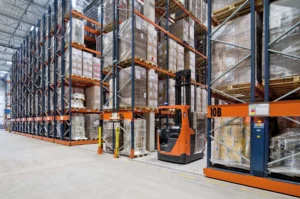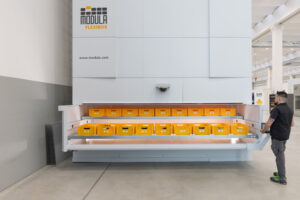In every warehouse, manufacturing plant, or distribution center, one process defines the pace of productivity — material handling. It’s the backbone of how goods move, how orders are fulfilled, and how businesses maintain operational efficiency.
Yet in many facilities, material handling remains one of the most overlooked—and under-optimized—parts of the workflow. Manual storage systems may have worked decades ago, but in today’s high-volume, data-driven supply chain, they create unnecessary friction, errors, and inefficiencies.
That’s why forward-thinking companies are turning toward automated material handling systems and warehouse equipment. These solutions don’t just move materials — they redefine how organizations think about storage, labor, and efficiency.
In this post, we’ll cover:
- The basics of material handling (Material Handling 101)
- Its core benefits and applications
- Why automation is revolutionizing the process
- Proven ways to improve and streamline your operations — with Bradford Systems’ solutions that make it happen
Material Handling 101: The Basics
At its simplest, material handling refers to the movement, protection, storage, and control of materials throughout a facility — from receiving and production to storage, distribution, and shipping.
It encompasses every piece of equipment, process, and system that moves materials — whether it’s a forklift, conveyor belt, automated vertical lift, or robotic picking arm.
The Four Main Functions of Material Handling
- Movement – Transporting goods within or between areas as a unit load.
- Storage – Holding materials efficiently and securely between processes.
- Control – Managing inventory, access, and traceability.
- Protection – Ensuring materials are handled safely to avoid damage or loss.
A successful material handling strategy integrates these four functions into a seamless system — one that moves the right product to the right place at the right time with minimal waste.
The Benefits and Applications of Material Handling Systems
When optimized, material handling can transform a facility’s performance. Here are the top benefits businesses gain when investing in modern systems:
1. Increased Efficiency
Automating repetitive tasks — such as retrieving, storing, or sorting goods — reduces idle time and eliminates manual bottlenecks. The result? Faster throughput, better space utilization, and shorter order cycles.
2. Reduced Labor Costs
Labor shortages and turnover are ongoing challenges in industrial settings. Automated handling systems reduce reliance on manual labor, allowing teams to focus on higher-value tasks such as maintenance, supervision, and real-time inventory levels process improvement.
3. Improved Safety
Manual lifting, carrying, and repetitive motion can lead to injuries. Automation minimizes physical strain on workers, helping facilities meet OSHA safety standards while improving morale and retention.
4. Space Optimization
Efficient material handling goes hand in hand with clever storage. Automated systems can utilize vertical space and compact layouts, allowing you to store more in less square footage.
5. Greater Accuracy and Quality Control
Automation ensures consistency. Barcode tracking, pick-to-light systems, and vertical lift modules minimize human error and maintain real-time inventory visibility.
6. Scalability
As your business grows, automated material handling can easily expand. Modular systems, such as vertical lifts, carousels, and conveyors, can be easily adapted to accommodate new SKUs, workflows, or facility layouts.
Why Automate Material Handling?
Automation isn’t just a technological upgrade — it’s a strategic advantage.
Warehouses today face a convergence of challenges: higher order volumes, smaller delivery windows, labor constraints, and growing pressure to maximize space. Automation provides a solution that addresses all of them simultaneously.
1. Meet Rising E-Commerce Demands
E-commerce has redefined expectations for speed and accuracy. Automated material handling ensures goods flow quickly from storage to packing and shipping — supporting same-day and next-day delivery standards.
2. Reduce Operational Bottlenecks
Automation systems, such as conveyors, shuttles, and vertical lifts, eliminate chokepoints in workflows. Materials move smoothly without relying on manual transfers, ensuring continuous production or fulfillment.
3. Improve Real-Time Inventory Management
Modern systems integrate directly with warehouse management software (WMS) or ERP systems. Every item movement is tracked automatically, providing live data on stock levels, storage locations, and cycle counts.
4. Enhance Sustainability
Energy-efficient automation reduces waste and improves storage density, cutting energy costs and lowering your carbon footprint.
5. Stay Competitive
Automation is no longer a luxury — it’s a necessity. Companies that invest in automated material handling gain a competitive edge through faster output, improved accuracy, and enhanced profit margins.
5 Proven Ways to Improve and Streamline Material Handling Operations
Here’s how industrial facilities can transform their operations from manual to optimized — leveraging Bradford Systems’ automation and industrial storage solutions.
1. Upgrade to Automated Storage & Retrieval Systems (AS/RS)
Automated Storage and Retrieval Systems eliminate the need for manual picking and stacking by using robotic lifts or shuttles to retrieve goods from high-density storage areas, ensuring the entire system operates efficiently.
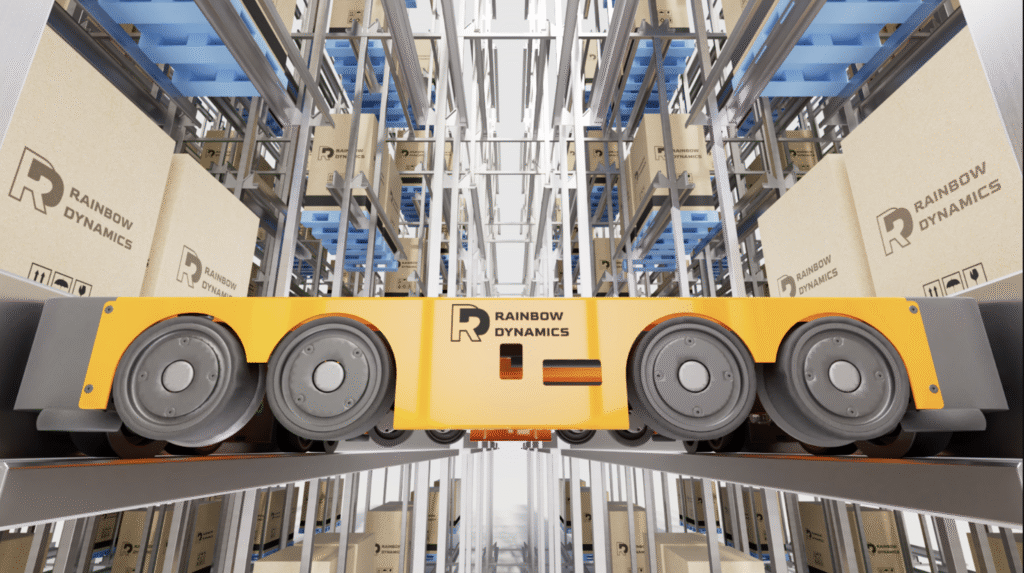
Benefits:
- Speeds up retrieval and restocking
- Increases space utilization by up to 90%
- Reduces labor and handling errors
Bradford Solution:
Bradford Systems partners with top automation manufacturers, such as Modula and Vidir, to deliver vertical lift modules, carousels, and AS/RS systems that fit any warehouse footprint.
2. Implement Vertical Lift Modules (VLMs)
VLMs are automated storage towers that deliver trays of materials directly to the operator at an ergonomic height, eliminating the need to walk, search, or reach.

Benefits:
- Maximizes vertical space
- Enhances safety and ergonomics
- Integrates easily with existing WMS software
Bradford Solution:
Modula Vertical Lift Modules are ideal for storing parts, tools, and supplies. They can handle thousands of SKUs while reducing floor space by up to 90%.
3. Integrate Conveyor and Transport Systems
Conveyor systems and shuttle systems automate the flow of products between zones, from receiving to shipping, creating a continuous and predictable movement of goods.

Benefits:
- Streamlines workflow
- Reduces manual transport
- Integrates seamlessly with robotics and sortation systems
Bradford Solution:
Bradford offers custom conveyor and automation integration, ensuring systems align perfectly with your throughput goals and layout constraints.
4. Adopt Smart Racking and Shelving Systems
Traditional static shelving wastes space and time. Innovative racking systems, such as High-Density Mobile Shelving, can double your storage capacity without expanding your footprint.

Benefits:
- Optimizes space by eliminating fixed aisles
- Improves organization and access
- Increases overall storage density
Bradford Solution:
Our industrial mobile shelving systems enable you to store materials compactly, with customizable controls that promote safety and efficiency.
5. Leverage Robotics and Autonomous Material Transport
Robotic systems and Autonomous Mobile Robots (AMRs) automatically bring materials to workers or workstations, ensuring easy access for improved efficiency. This drastically reduces manual travel time, improving throughput and accuracy.
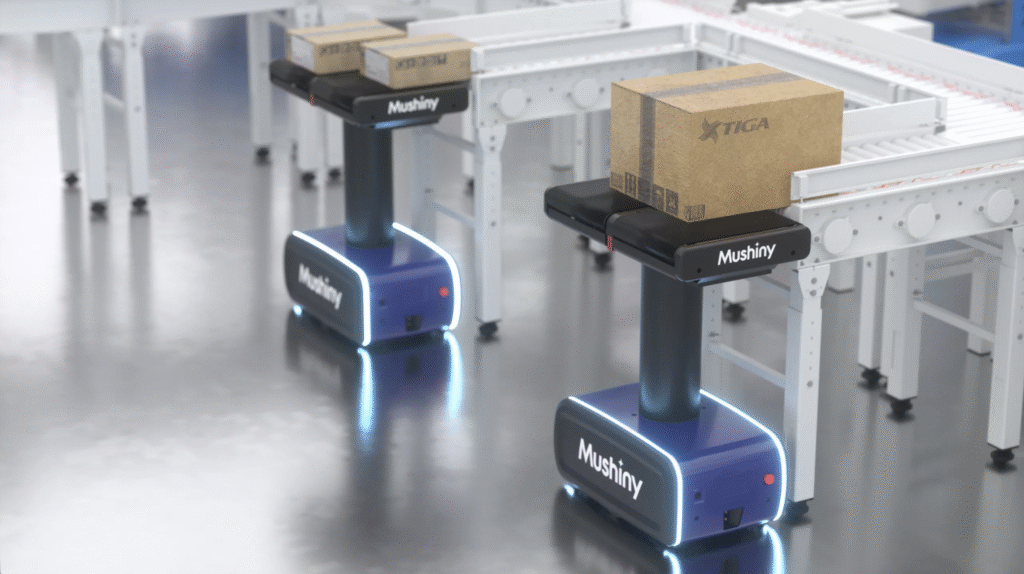
Benefits:
- Reduces downtime between processes
- Increases order picking accuracy
- Scales easily as demand fluctuates
Bradford Solution:
Bradford partners with leading robotics and automation providers to integrate intelligent transport and robotic picking systems that sync with your operations.
Applications Across Industries
Automated material handling isn’t limited to warehouses — it’s transforming operations across multiple sectors:
- Manufacturing: Streamlines production lines and component storage.
- Automotive: Improves just-in-time delivery and inventory control.
- E-commerce: Accelerates picking, sorting, and shipping.
- Pharmaceuticals: Ensures accuracy and traceability in high-compliance environments.
- Food & Beverage: Enhances cold storage handling and product rotation.
Wherever materials move, automation creates a measurable impact.
Why Choose Bradford Systems for Material Handling Transformation
For over 50 years, Bradford Systems has helped organizations optimize their storage, workflow, and facility design, particularly in managing heavy loads. Our team specializes in custom industrial automation and material handling solutions that make operations safer, smarter, and more profitable.
Our Offerings Include:
- Automated storage and retrieval systems (AS/RS)
- Vertical lift modules (VLMs)
- Industrial racking and shelving systems
- High-density mobile shelving
- Conveyor and robotic systems
- Warehouse design, engineering, and installation
From assessment to implementation, we work side-by-side with your operations team to design a system that supports your specific goals — whether that’s improving throughput, reducing costs, or preparing for expansion.
The Future of Material Handling Is Here
As automation reshapes the logistics and industrial landscape, businesses that adapt early gain a decisive edge. Whether you’re managing hundreds of SKUs or millions, the proper material handling system determines how efficiently your operation runs — and how much profit you keep, while also considering future scalability to accommodate growth.
With Bradford Systems as your partner, your facility can transition seamlessly from manual to automated operations, unlocking higher productivity, improved space utilization, and a safer workplace.
Ready to modernize your material handling operations? Contact Bradford Systems today to schedule a complimentary consultation and explore how our industrial automation solutions can help you achieve optimal efficiency in your facility.
